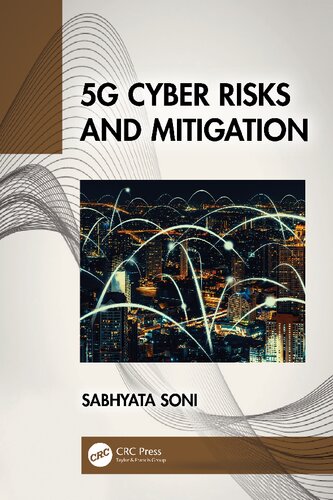

Most ebook files are in PDF format, so you can easily read them using various software such as Foxit Reader or directly on the Google Chrome browser.
Some ebook files are released by publishers in other formats such as .awz, .mobi, .epub, .fb2, etc. You may need to install specific software to read these formats on mobile/PC, such as Calibre.
Please read the tutorial at this link: https://ebookbell.com/faq
We offer FREE conversion to the popular formats you request; however, this may take some time. Therefore, right after payment, please email us, and we will try to provide the service as quickly as possible.
For some exceptional file formats or broken links (if any), please refrain from opening any disputes. Instead, email us first, and we will try to assist within a maximum of 6 hours.
EbookBell Team

5.0
88 reviews5G networks will use new technologies that could make them more vulnerable to attacks. These technologies include massive multiple input, multiple output (MIMO), which uses more antennas than traditional cellular networks, and millimeter wave (mmWave), which uses higher frequencies than traditional cellular networks. These new technologies could make it easier for attackers to intercept data or disrupt service.
To address these concerns, security measures must be implemented throughout the network. Security mechanisms must be included in the design of 5G networks and must be updated as new threats are identified.
Moreover, to address these risks, 5G security standards need to be developed and implemented. These standards should include measures to protect against Denial of Service (DoS) attacks, malware infections, and other threats.
Fortunately, Artificial Intelligence (AI) can play a key role in mitigating these risks. With so many interconnected devices, it can be difficult to identify and isolate malicious traffic. AI can help by identifying patterns in data that would otherwise be undetectable to humans.
6G technology is still in the early developmental stages, but security experts are already voicing concerns about the potential challenges that could arise with this next generation of mobile connectivity.
Experts are already working on a